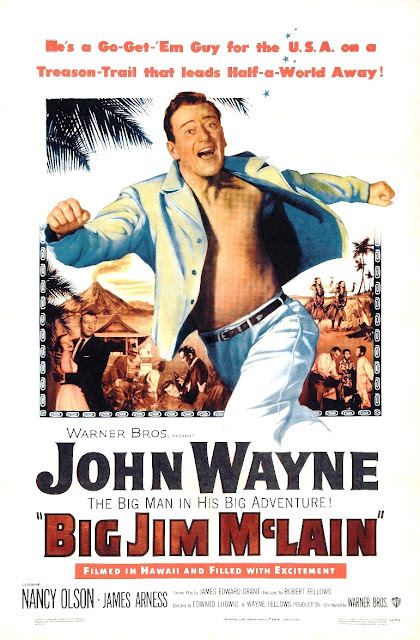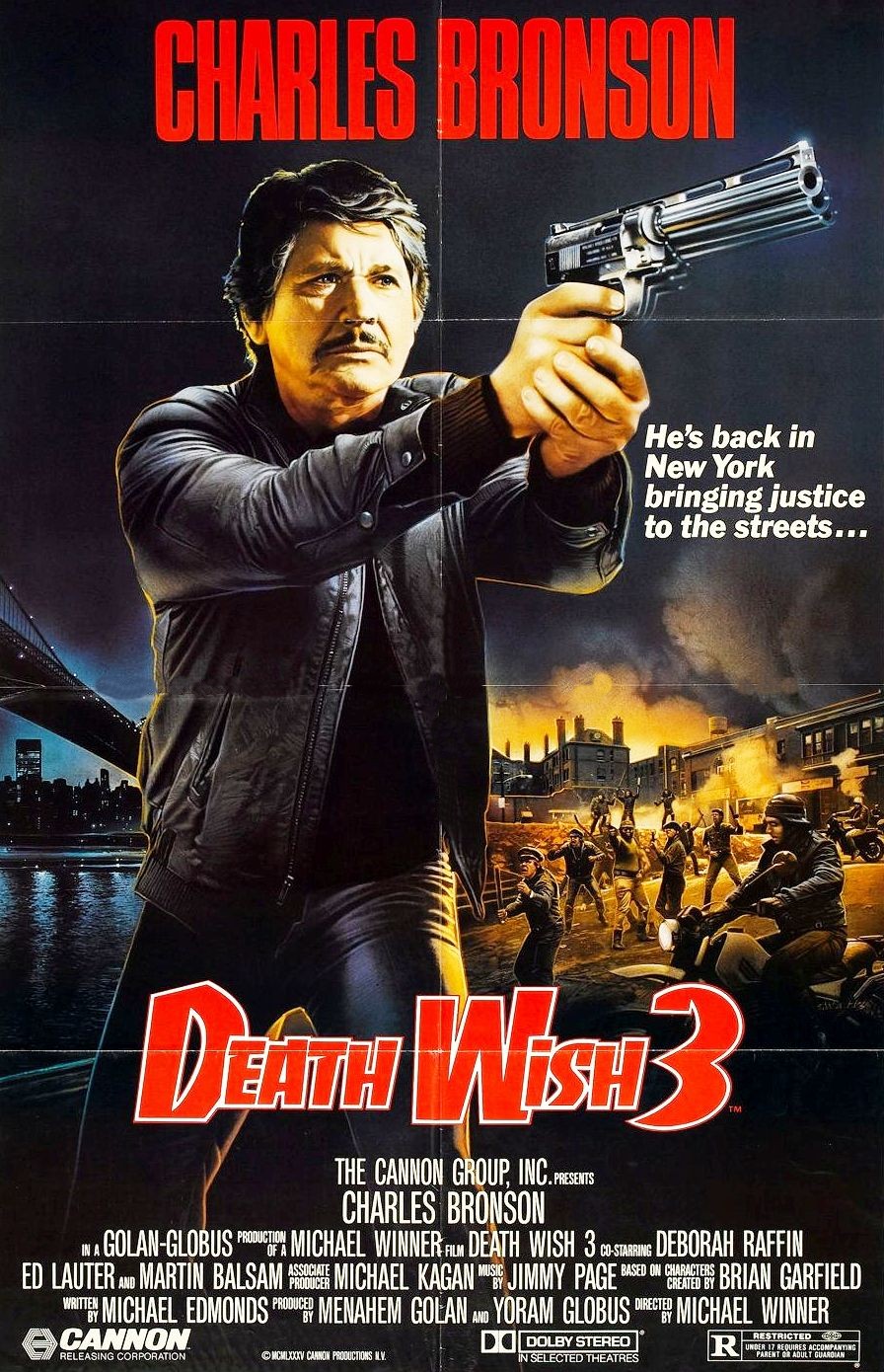Big Jim McLain (1952)
Director: Edward Ludwig
Production: Robert Fellows (Wayne-Fellows Productions - Warner Bros.)
Screenplay: James Edward Grant, Richard English & Eric Taylor
Starring: John Wayne - Nancy Olson - James Arness - Alan Napier - Hans Conried
Filmed between April and June, 1952 - Premiered, 28-VIII-1952 - 90 min.
This is one of those movies that it has to be seen to be believed. Wayne personifies an investigator from the HUAC (yes, the same House Un-American Activities Committee behind Hollywood's anti-communism purges) hunting down a pro-Soviet subversive group in the idyllic Hawaii, although the plot centres more on his romance with the secretary of one of the suspects and the action scenes stay in the background behind a string of patriotic messages and on the dangers of communist infiltration, "whose objective is the slavery of mankind". However, and without standing out in anything in particular, this is not a bad movie. Its director, Ukrainian Edward Ludwig -born Isidor Litwack- was an interesting craftsman with a good narrative pulse and a suitable visual sense, as demonstrated on his two previous titles with Wayne, The Fighting Seabees (1944) and Wake of the Red Witch (1946). The script, drafted for the most part by James Edward Grant, a personal friend of the actor and one of his most assiduous collaborators, both inside -15 movies together- and outside of cinema, is full of common places and situations already viewed -or to be seeing- in other Wayne titles, but it functions appropriately even if the treatment of the pro-Soviet faction does not differ too much from the one commonly used with the Mafia (in fact, in some countries the movie had its dialogues changed to turn the communists into marijuana dealers). And the shamelessly manipulative moments, as the harangues by ex-communist characters or the ambiguous messages on the abuse of the 5th Amendment for criminal purposes, are skilfully written although they border the laughable. In spite of everything, the most interesting thing today is its reflection of a time and a feeling widely extended in a society, something happily overcomed that, anyway, is convenient not to forget.
As complement I also suggest to see the very entertaining I Was a Communist for the FBI (1951), Gordon Douglas' powerful film-noir, and The Red Danube (1949), a drama with a message marvellously directed by George Sidney.
Como complemento sugiero también ver las muy entretenidas I Was a Communist for the FBI (1951), un poderoso thriller negro de Gordon Douglas, y The Red Danube (1949), un drama con mensaje estupendamente dirigido por George Sidney.



Comentarios
Publicar un comentario